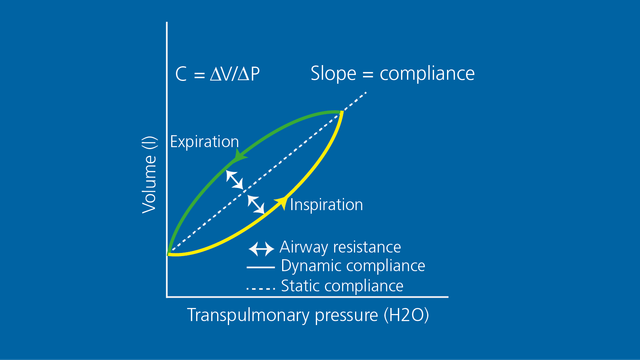

Static compliance represents pulmonary compliance during periods without gas flow, such as during an inspiratory pause. In Hamilton Medical ventilators it is obtained by the least square fit method described by Iotti (
Calculating static compliance (Cstat):
Cstat = VT / (Pplat - PEEP)
Calculating dynamic compliance (Cdyn):
Cdyn = VT / (PIP - PEEP)

Depending on the measurement technique, Cdyn is prone to underestimating the total compliance of the lung and thorax as it is influenced by the resistive part of lung mechanics.
Continuous, reliable measurement of static compliance of the lung and thorax is of the utmost importance in state-of-the-art mechanical ventilation. Dynamic compliance cannot be considered a satisfactory substitute, as it is dependent on the airway resistance and can be misleading in various clinical conditions.
However, Cdyn is used in Hamilton Medical's ASV® mode to estimate the maximum tidal volume allowed, which is calculated as:
Cdyn x Pmax (Pmax = set alarm limit (Phigh)-10-PEEP).